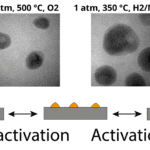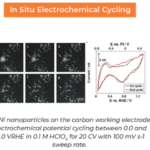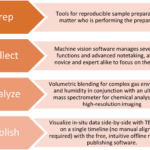
 Across the globe, the energy demand is continually increasing. Unfortunately, attempts to find short-term energy solutions have caused significant environmental damage, such as increased carbon dioxide in the atmosphere and dwindling oil reserves.
Across the globe, the energy demand is continually increasing. Unfortunately, attempts to find short-term energy solutions have caused significant environmental damage, such as increased carbon dioxide in the atmosphere and dwindling oil reserves.
To combat the repercussions of current energy generation techniques, researchers are working to discover new energy materials that are more efficient, sustainable, and less expensive. Additionally, attempts to make currently installed energy solutions more environmentally friendly, such as improving catalytic converter technology, has become incredibly important for global air quality.
The most promising energy materials research is being conducted using in situ techniques. In situ researchers are working to harness electricity through material interaction, testing energy-harnessing and energy-converting materials, and optimizing lithium-ion battery charging processes. In order to successfully study these energy materials, researchers must rely on in situ TEM holders.
Let’s take a look at how in situ TEM holders enable in-depth energy materials research:
Heating & Electrical Cell TEM Holder
In order to observe the real-time reactions and structural changes during thermal and electrical processes inside an electron microscope, utilize a heating & electrical cell holder. For energy materials research, holders like the Protochips Fusion system, allow researchers to test the performance and observe structural changes in solid-state energy converters. TEM holders compatible with conducting EDS elemental analysis also aid in the successful characterization of energy materials under heated and electric conditions.
Applying heat, current, and voltage to energy materials allows the researcher to determine the efficiency of the device. In terms of solid-state batteries, researchers can use the information they gather about how effectively a battery can hold charge during in situ research to conceptualize ways to improve device performance.
Gas Cell TEM Holder
Gas cell TEM holders like the Protochips Atmosphere system are useful for studying catalysts and semiconductors under real-world conditions. In particular, study of electrocatalysis has advanced significantly with the use of these in situ holders. The use of TEM holders holds great promise in the field of clean energy generation, as electrocatalysts harness solar energy and mimic photosynthesis to generate electric potential.
In one electrocatalytic study, researchers used a gas cell TEM holder to heat hydrated cobalt to 300-degree units under nitrogen. They were able to clearly observe and characterize the oxidation of the cobalt, as hydrated cobalt layers formed as they would in their real-time application. In order to study electrocatalysts properly, researchers can make use of a gas cell TEM holder’s stable heating membrane and pressure application capabilities.
Liquid Cell TEM Holder
The majority of batteries contain liquid electrolyte, but the common characterization of these materials is still under ultra-high vacuum. For example, when charging a lithium-ion battery, liquid electrolyte reacts with a lithium metal rod to produce electric potential. When power is drawn out of the lithium-ion battery, lithium reenters the liquid electrolyte, dissolving until there is no more potential to be extracted. In order to view this entire process in real-time, researchers need the safe liquid encapsulation of a liquid cell TEM holder.
By studying energy materials in liquid environments, researchers can devise solutions that improve battery charging efficiency and performance. In fact, researchers used the Poseidon Select in situ liquid TEM holder to view the stripping of lithium in a nanoscale battery during charging and discharge. Their research discovered sources of inefficiency in batteries which allows researchers to make informed ideas about how to develop more efficient and safer lithium-ion batteries.
Final Thoughts
Improving efficiency and performance of energy materials is vital to the future of society and the environment. With in situ TEM holders, researchers are able to view the processes that can inform new, clean ways to generate energy. The future will require more sustainable energy solutions— in order to preserve the ozone layer, as well as prepare for the degradation of the crude oil supply, researchers are using in situ TEM holders to research and discover sustainable efficient alternatives.









